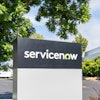The current explosion of technologies such as CRM, ERP and prescriptive analytics in B2B isn’t anticipated to subdue any time soon. As adoption rises, industrial B2B companies are poised to cash in on benefits such as improved operational efficiencies, increased customer satisfaction, and sales and profit growth. Whether or not these benefits are realized is contingent upon if the end user adopts, uses and embraces the technology.
ALSO SEE: Reducing Food Waste and Increasing Efficiency with ERP
Consider this statement from Gartner Analyst Lisa Kart in the September 2015 article “How to Succeed with Advanced Analytics” published in InformationWeek: “I’ve seen some really great work and analytics done, but it doesn’t get implemented because people don’t get the buy-in. Where I see people fail is [in] really overlooking the cultural issues.”
Certainly. Buy-in doesn’t happen overnight, it comes from a deliberate and thoughtful change management program designed with the user in mind.
In fact, a 2014 study from Prosci, the world leader of benchmarking research and change management products stated, “Projects with excellent change management effectiveness were six times more likely to achieve project objectives than teams with poor change management effectiveness, 96 percent to 16 percent, respectively. Excellent change management also correlated directly with staying on schedule and staying on budget.”
Clearly, for B2B companies to capitalize on the promise of new technologies, the people using the solutions must be at the core of a comprehensive change management plan. Particularly in B2B manufacturing and distribution companies, where some employees have a 20- to 30-year tenure and are heavily ingrained in their existing processes. But not only that, sometimes openness to change can vary widely among all reps, regardless of their age or tenure.
Taking the People Path to Change Management Success
Take the example of Shamrock Foods, one of the largest foodservice distributors in the U.S. Founded in 1922, Shamrock is a family-owned company whose motto is “We treat our Customers as Friends, and our Associates as Family.” This motto rings true for many loyal Shamrock associates who have been with the company for decades. A few of the 450 sales reps began their careers before much, if any, significant computer technology was used in the field. They have seen a great deal of change over the years.
But even the younger generations of sales professionals are experiencing rapid change as Shamrock is focused on being on the leading edge of technology. Within the past three years, Shamrock has launched an integrated CRM, a new customized order-entry software platform, a customer portal, and prescriptive sales analytics. Adding each of these new technologies has required sales reps to go through a fundamental paradigm shift to accept, adopt and embrace the new tools. Knowing this, change management has been a strong lynchpin to success in deployment at Shamrock.
Typically, technology advancement is led by a project team concerned with dates, deadlines and ROI. It is easy to focus on the project itself and not think about the impact on the people who have to change. All too often, technology launches are met with resistance, leaving the project managers and executive sponsors befuddled. The real culprit isn’t the lack of planning, it’s the lack of a concerted change management effort targeted towards the end user.
New technology requires sales reps to learn new skills, break old habits and create new routines. This can present real value conflicts to users on the frontline as they may need to change some fundamental ways in which they go about achieving their goals.
A formal change management approach is necessary to maximize the people side of the project implementation. In Shamrock’s case, the move to prescriptive sales analytics was going to be a large paradigm shift. The technology was simple – but leveraging the technology would require significant change in the way these reps viewed their world. Here are some key change management principles used by Shamrock that resulted in a very successful rollout:
Active and Visible Executive Sponsorship
The essential first step for those who must change is to understand what the change is and why it is necessary. The crew of the ship looks to the captain for vision and when the message is clear and compelling, they tend to stay on board.
Months before the actual rollout, Shamrock created awareness of the change in sales meetings with presentations by executive leadership and key project team leaders. These presentations offered a visualization of the future state and allowed for questions from the eventual end-users.
Understand the Role of Senders and Receivers
Prosci’s research has demonstrated a strong correlation between certain senders of messages and those who receive them. When it comes to messages about business issues and the need for change, executive-level leadership is the preferred sender. Shamrock leveraged this dynamic during these pre-rollout presentations.
But for messages about personal implications and risk, the preferred sender is the employee’s direct supervisor. The employee’s manager is the person closest to them and there is typically an element of trust. They are in the best position to address personal questions and concerns about the change.
Often when new technology is introduced, the manager is a bystander to the training event. Shamrock chose to leverage the position of preferred sender by making the sales manager the owner of training. Shamrock’s sales training team created a “Train-the-Trainer” program consisting of two sessions to prepare these managers to facilitate the rollout to their sales teams.
Understand that Resistance is Natural — and Prepare for It
The first of these training sessions occurred 30 days prior to implementation. The managers were first given a thorough introduction and tour of the new tools. Next, they were asked as a group to identify benefits to the rep and questions and concerns they anticipated. Afterward, they broke into groups and were asked to identify how they would respond and prepare. They left equipped to extend the awareness conversation and create desire and anticipation in their employees as the rollout approached.
The second session, just before implementation, further prepared the managers to train their teams. There was a company-wide introduction of the new tool followed by these manager-led training sessions.
When a particular change is more about changing habits and perspective and less about the buttons and mouse-clicks involved, there needs to be practice and follow-up after the training “event” has concluded. Taking a golf lesson is one thing; getting your swing to improve takes practice and repetition. When frustration rolls in, it is helpful for a trusted ally to provide encouragement. By preparing the managers to teach the functionality of the tool, they were better prepared not only to transfer knowledge, but also to answer questions, relate to frustrations and foster ability in the field.
Reinforce the Change
It’s important to remember that sales rep adoption of any new technology is an ongoing process and will not happen overnight. Ensure that all training and communication plans include ample time for re-grouping and reinforcing to keep sales reps on track and up-to-date on the progress.
In addition to setting regular meetings with sales reps during the roll-out, schedule short and frequent follow-up sessions to share success stories to help continue the adoption momentum. Additionally, encourage sales reps to share their own success stories and best practices with their peers to further showcase the value of the solution.
Ultimately, implementing change in any organization is difficult, but by being direct, clearly communicating the benefits, and taking employee feedback into account, B2B executives and managers can reduce resistance and ensure adoption of any new technology.
1“How to Succeed with Advanced Analytics,” Information Week, September 18, 2015
About the authors
Dave Barclay is Director of Enterprise Sales Training at Shamrock Foods. A 25-year veteran of the foodservice industry, Dave and his team lead the learning and development process for sales and sales leadership at Shamrock, where the use of a formal change management process has accelerated learning and adoption of sales technology, selling skills and effective leadership behaviors. Based in Phoenix, Arizona, Shamrock Foods serves the Western U.S. and is one of the nation’s largest foodservice distributors.
Suraj Mohandas leads the global Customer Success group, ensuring that Zilliant customers get the greatest long-term benefit from Zilliant’s solutions and innovations, while maintaining high customer satisfaction and retention. Suraj has worked for Zilliant for more than four years and is based in Austin. Prior to joining Zilliant, Suraj worked at Insight Enterprises in the Profitability department responsible for company-wide pricing strategies and margin enhancement initiatives. His experience spans multiple industries, including high-tech, distribution, food and beverage, paints and coatings, rental equipment, automotive parts, construction materials, shipping and electronic components.























